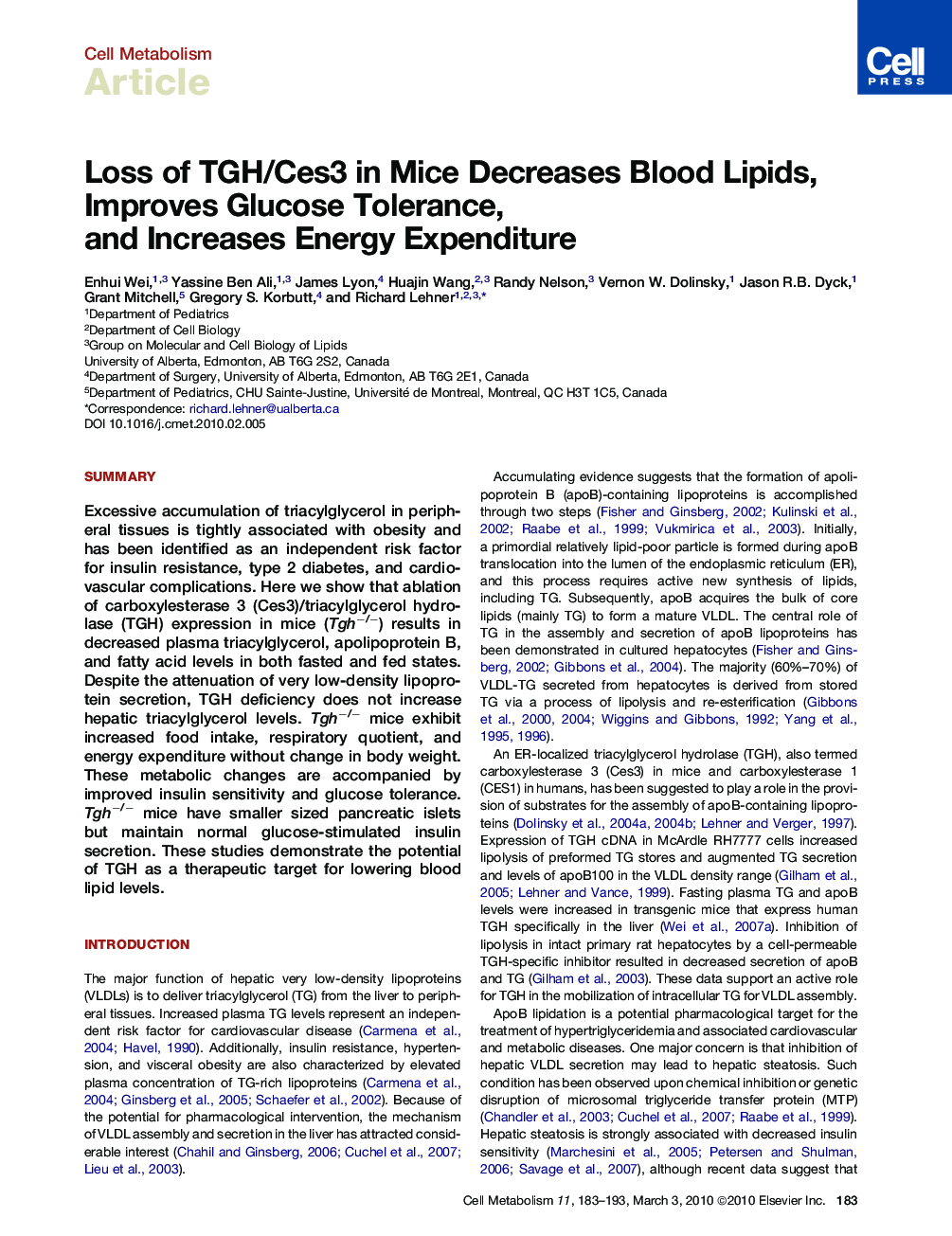| کد مقاله | کد نشریه | سال انتشار | مقاله انگلیسی | نسخه تمام متن |
|---|---|---|---|---|
| 2793367 | 1155137 | 2010 | 11 صفحه PDF | دانلود رایگان |

SummaryExcessive accumulation of triacylglycerol in peripheral tissues is tightly associated with obesity and has been identified as an independent risk factor for insulin resistance, type 2 diabetes, and cardiovascular complications. Here we show that ablation of carboxylesterase 3 (Ces3)/triacylglycerol hydrolase (TGH) expression in mice (Tgh−/−) results in decreased plasma triacylglycerol, apolipoprotein B, and fatty acid levels in both fasted and fed states. Despite the attenuation of very low-density lipoprotein secretion, TGH deficiency does not increase hepatic triacylglycerol levels. Tgh−/− mice exhibit increased food intake, respiratory quotient, and energy expenditure without change in body weight. These metabolic changes are accompanied by improved insulin sensitivity and glucose tolerance. Tgh−/− mice have smaller sized pancreatic islets but maintain normal glucose-stimulated insulin secretion. These studies demonstrate the potential of TGH as a therapeutic target for lowering blood lipid levels.
► Triacylglycerol hydrolase participates in adipose and liver lipid metabolism
► Loss of TGH lowers plasma fatty acid and triglyceride levels in mice
► Loss of TGH increases energy expenditure in mice
► Loss of TGH results in improved glucose metabolism and β cell function
Journal: - Volume 11, Issue 3, 3 March 2010, Pages 183–193